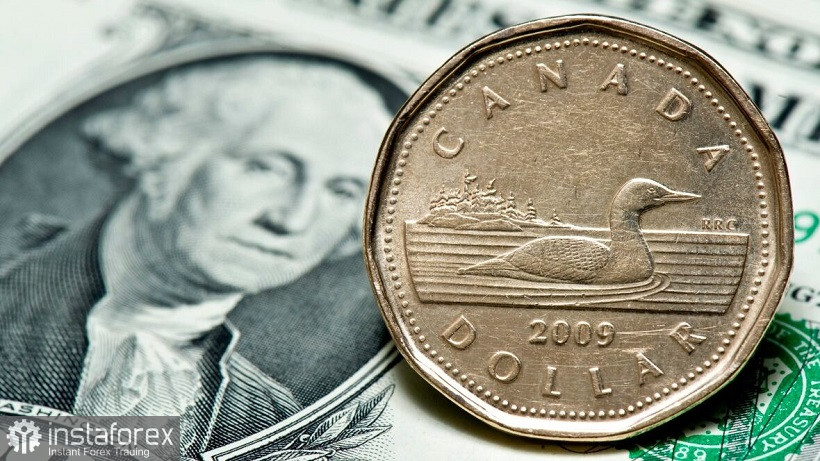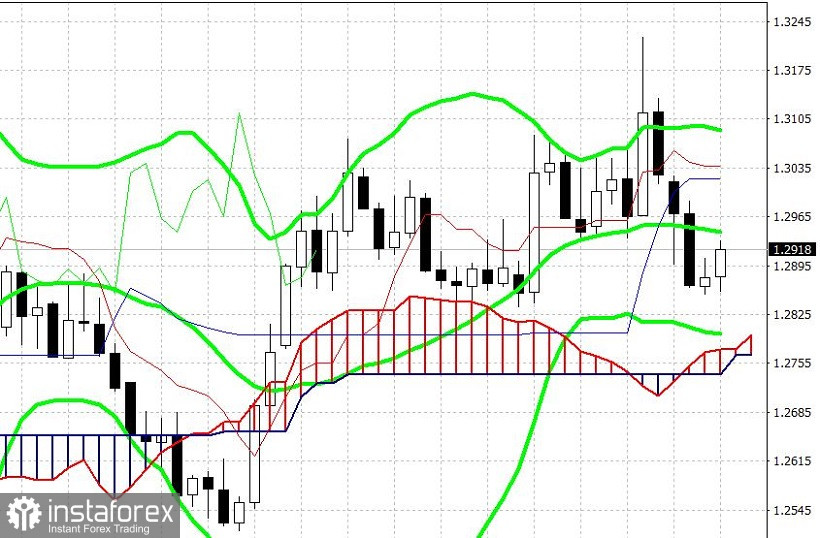The report on inflation growth in Canada published this week has undermined the loonie's position. It was in the red zone, disappointing the bears of the USD/CAD pair. The optimism associated with the results of the last meeting of the Bank of Canada was partially offset. The fundamental picture of the pair has changed, even despite the general weakening of the US currency. Against this background, the bears of USD/CAD were forced to retreat: bulls intercepted the initiative for the pair.

It cannot be said that the inflation report turned out to be disastrous for the loonie. Not at all. The problem with the release is that it did not meet the expectations of most experts who predicted stronger numbers. Judge for yourself: on an annualized basis, the overall consumer price index came out at 8.1%: this is the strongest result since February 1983. However, analysts expected to see this component at the level of 8.4%. In monthly terms, a more significant "spread" was recorded: after the May growth to the level of 1.4%, the indicator in June rose to only 0.7%. The basic consumer price index, which does not take into account food and energy prices, rose to 6.2% in annual terms, also falling short of the forecast level (6.7%).
The June inflation report should be viewed through the prism of the Bank of Canada's last meeting. Let me remind you that the central bank raised the interest rate by 100 basis points at once, contrary to forecasts of a 75-point increase. At the same time, the central bank said that it was not going to stop there: according to Bank of Canada Governor Tiff Macklem, a "proactive" rate increase would cool the internal inflationary pressure. At the same time, Macklem did not talk about the further pace of rate hikes – he only stressed that the central bank would maintain a hawkish course. Macklem made it clear that the pace of monetary policy tightening will depend on the dynamics of inflation and other macroeconomic indicators.
The next meeting of the central bank will be held in September – by that time it will be possible to talk about certain inflationary trends. Therefore, the June and each subsequent report on CPI growth in Canada will play an important role for the loonie. For example, according to analysts of the Canadian bank RBC Capital Market, inflation will soon reach (or has already reached) its "ceiling". According to the bank's analysts, recently there are "more and more signs that global inflationary pressure may be close to its peak." At the same time, they point to the structure of the inflation release, focusing on the fact that energy prices provided most of the CPI growth. At the same time, it notes that the decline in the cost of housing for resale in recent months is beginning to manifest itself in a decrease in the cost of buying a home, which was the main factor in price growth last year. In addition, a sharp slowdown in the growth of rents and food prices was recorded in June.
After the inflation report was released, economists of another Canadian bank – TD Securities – suggested that now the central bank is less susceptible to pressure from the CPI. And if core inflation continues to show signs of slowing down, the Bank of Canada will "be able to afford" to tighten monetary policy at a more measured pace, thereby reducing the side effects on the country's economy.

The oil market also exerts indirect pressure on the loonie. Oil is getting cheaper, which affects the health of commodity currencies. In particular, the cost of WTI oil fell to $95 per barrel. For comparison, we can say that in early June this figure was at the level of $120.
Thus, the Canadian dollar lost several key trump cards at once, due to which the USD/CAD bears developed the downward trend. At the moment, bulls have seized the initiative, but due to the general weakness of the greenback, the upward pullback looks uncertain. A stalemate has developed for the pair: bears are out of work, while bulls are in no hurry to return to the area of the 30th figures.
From a technical point of view, the situation is also uncertain. On the daily chart, the USD/CAD pair is between the middle and bottom lines of the Bollinger Bands indicator and above the Kumo cloud. However, the Tenkan-sen and Kijun-sen lines are also above the cloud. This combination does not signal the advantage of a downward or upward scenario. Now we can only say that bulls are in close proximity to the resistance level of 1.2950 (the middle line of the Bollinger Bands on the D1 timeframe). In view of this fact, short or long positions look risky so far. In order to develop an upward movement, bulls need to overcome the price line at 1.2950: in this case, it will be possible to consider long positions with the 1.3040 target (the Tenkan-sen line on the same timeframe). Bears have a much more difficult task: they need to return under 1.2800 (the lower line of Bollinger Bands on the same timeframe). In this case it will be possible to say that the downward trend is in force again. Therefore, at the moment it is advisable to take a wait-and-see position on the USD/CAD pair.





















